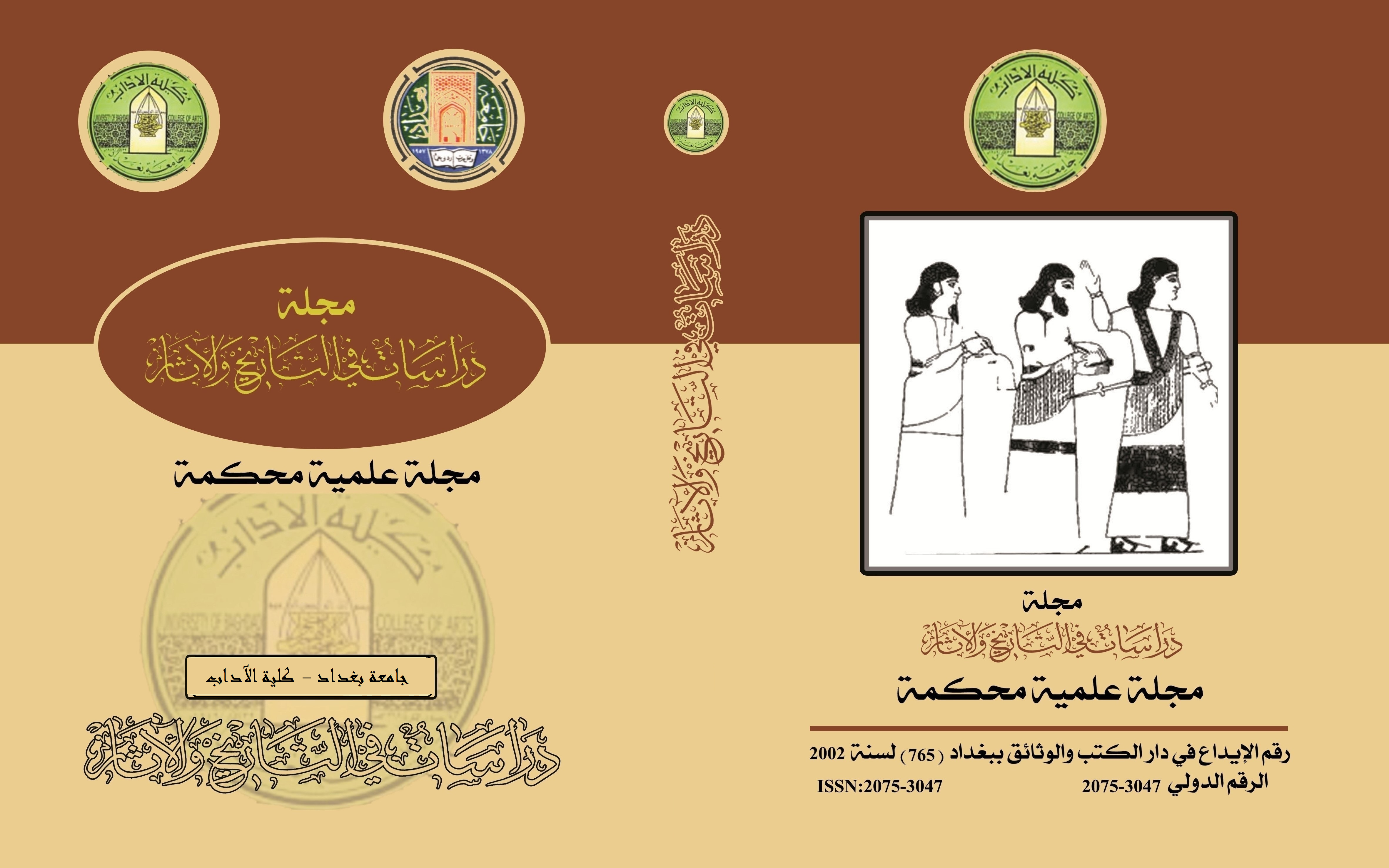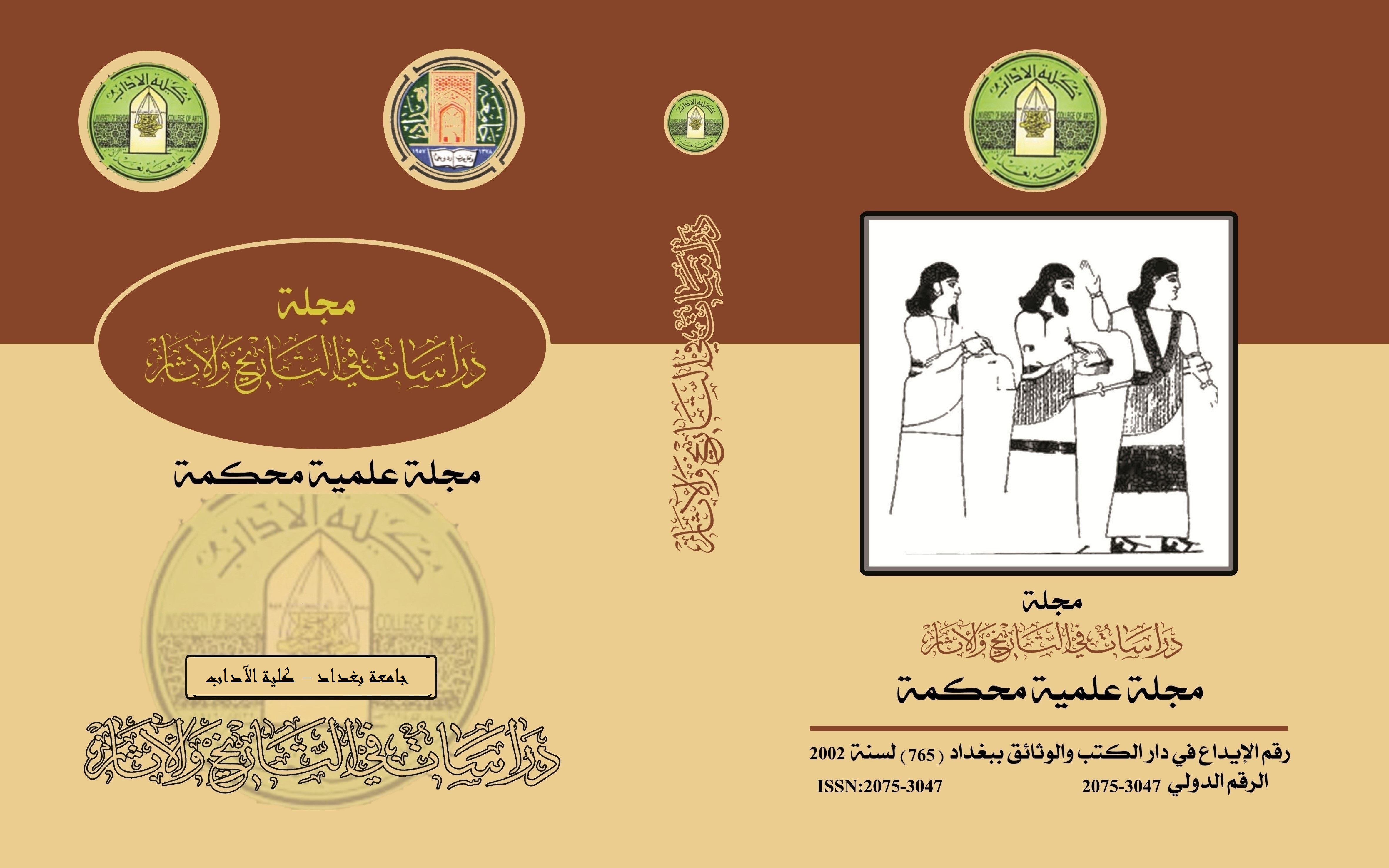التوكنز،أقدم أدوات للعد والحساب
الكلمات المفتاحية:
توكنز- أدوات العد والحساب – منطقة زاكروس – الاناضول – بلاد الرافدين – بلاد ايران القديمة.الملخص
ظهرت القطع الطينية الصغيرة المسماة إصطلاحاً بالـ (توكنز) متزامنة مع الأدوار التي شغلتها مجموعات الصيادين والرعاة في العصر الحجري القديم المبكر، التي شهدت ظهور الزراعة وتدجين الحيوانات والتي تشير الى أن ظهور التوكنز كان لأغراض عمليات تنظيمية تتعلق بالعد والحساب والتي تزامنت مع زراعة الحبوب وإنتشرت منها الى أغلب مناطق الشرق الأدنى القديم،أستخدمت التوكنز منذ حوالي (9000 ق.م) حتى (3500 ق.م) ومثلَت بأشكالها المختلفة أغلب المنتوجات الزراعية الخاصة بالحقول لقياس اوزان الحبوب أو كميات الزيوت فضلاً عن أعداد وأنواع الماشية والأغنام والماعز وحملت التوكنز آثار التنوع في أشكال صناعتها وتحويرها من مجرد سطوح مستوية إلى أشكال ذات طابع هندسي تحمل علامات مميزة، بقيت البعض من تصاميمها لمدة جاوزت الخمسة آلاف عام على الرغم من ظهور وتطور صناعات أخرى موازية كصناعة الفخار، يعتقد أن أولى الأستخدامات التي شملت التوكنز كانت لأغراض تنظيمية بحتة تتعلق حصراً ربما بتسجيل البضائع فعلى سبيل المثال تشير قطع التوكنز المخروطية والدائرية الشكل الى الحبوب بأنواعها المختلفة فيما تشير الأشكال البيضوية مع وجود نوع من التحزيز الدائري الى الجرار الخاصة بحفظ الزيوت أو أية مادة سائلة أخرى.
المراجع
1. Bader. N, Tell Maghzalia- An Early Agricultural Settlement in Northern Iraq, Early Stages in the Evolution of Mesopotamian Civilization, Soviet Expedition in Northern Iraq, (Arizona:1993).
2. Bendery. R, Whitlam. J, Elliot. S, Aziz. K, Matthews R&W, Seasonal Rhythms of A Rural Kurdish Village: Ethno-zoo archaeological Research in Bestansur Iraq, (Oxford:2016).
3. Besserat. D, Before Writing, from Counting to Cuneiform, (Austin:1992).
4. -------------, Tokens: Facts and Interpretation, (Visible Language:1986).
5. -------------. S, An Archaic Recording System and the Origin of Writing, (Syro-Mesopotamian Studies:1977).
6. Ezgi. N, Kazanci. D, Aydogan. A & Others, A Genomic Snapshot of Demographic and Cultural Dynamism in Upper Mesopotamia During the Neolithic Transition, (Turkey: 2022).
7. Groene. D, Bendery. R, Muldner. G and others, Sheep Management in the Early Neolithic in Zagros Region (8000-5000 BC): New Zoo Archaeological and Isotopic Evidence from Ganj Dareh, Bestansur and Jarmo, (Journal of Archaeological Science:2023).
8. Hameed. V, Kazzazi. M, Metric Analysis of Female Figurines from Tepe Sarab, (Tehran University:2011).
9. Hughes. E, Structural Depositions and the Interpretation of Ritual in the Near East Neolithic: A New Methodology, (Liverpoor:2014).
10. Kozlowski. S, Nemrik 9, A PPN Neolithic Site in Northern Iraq, (Paleorient:1989).
11. ----------------, Nemrik, An Aceramic Village in Northern Iraq, (Warsaw:2002).
12. Matthews R&W, Richardson. A, Walsh. S, and others, The Early Neolithic of Iraqi Kurdistan: Current Research at Bestansur, Shahrizor Plain, (Paleorient:2019).
13. --------------- & W, Raheem. K, Richardson. A, Material Culture and Networks of Bestansur and Shimshara, (Oxford:2020).
14. ---------------, Nashli. H, Domesticating Iran, The Archaeology of Iran from the Palaeolithic to the Achaemenid Empire, (Routledge:2022).
15. Meiklejohn. C, Merrett. D, Reich. D, Pinhasi. R, Direct Dating of Human Skeletal Material from Ganj Dareh, Early Neolithic of the Iranian Zagros, (Journal of Archaeological Science:2017).
16. Mellart. J, Earliest Civilizations of the Near East, (London:1065).
17. ------------, The Neolithic of the Near East, (New York:1975).
18. Morales. V, Figurines and Other Clay Objects from Cayonu, (O.I.C: 1990).
19. Niemi. T, Near Eastern Tokens, A Contextual Analysis of Near Eastern Tokens from the 7th to the 4th Millennium B.C, (AHKR:2016).
20. Nieuwenhuyse. O, Muehl. S, A Late Neolithic Fishing Net from Kurdistan, Northern Iraq, (Paleorient:2012).
21. Ohnuma.K. K, Chronology of the Proto-Neolithic of Iraq and Syria – A Hypothetical View, (Al-Rafidan:1997).
22. Palka. J. W, Not Just Counters: Clay Tokens and Ritual Materiality in the Ancient Near East, (Springer:2020).
23. Renette. S, Sirvan. M, Ghafoori. O, The Mahidasht Survey Project (1975-1978), (Iran National Museum:1978).
24. Richardson. A, Material Culture in Early Modern Europe, (London:2017).
25. -----------------, Pre-pottery Clay Innovation in the Zagros Foothills, (University of Reading:2019).
26. Richter. T, Darabi. H, Alibaigi. S and others, The Formation of Early Neolithic Communities in the Central Zagros: An 11,500 Years Old Communal Structure at Asiab, (Oxford:2021).
27. Smith. B, The Emergence of Agriculture
28. Thrane. H, Excavations at Tepe Guran in Luristan, from 1962-1964, The Bronze Age and Iron Periods, (Jutland Archaeological Society:2001).
29. Tvetmarken. L, Visualizing Social Space: Investigating the Use of Space and Human-Animal Interaction, (Liverpool:2012).
30. Van Zeist. W, Smith. P, An Archaeological Study of Ganj-Dareh Tepe, Iran, 1978.
31. Weeks. L, The Development and Expansion of a Neolithic Way of Life, (Newgen:2013).
التنزيلات
منشور
إصدار
القسم
الرخصة

هذا العمل مرخص بموجب Creative Commons Attribution 4.0 International License.
:حقوق الطبع والنشر والترخيص
بالنسبة لجميع البحوث المنشورة في مجلة دراسات في التاريخ والآثار، يحتفظ الباحثون بحقوق النشر. يتم ترخيص البحوث بموجب ترخيص Creative Commons CC BY 4.0 المفتوح ، مما يعني أنه يجوز لأي شخص تنزيل البحث وقراءته مجانًا. بالإضافة إلى ذلك ، يجوز إعادة استخدام البحث واقتباسه شريطة أن يتم الاستشهاد المصدر المنشور الأصلي. تتيح هذه الشروط الاستخدام الأقصى لعمل الباحث وعرضه.
:إعادة إنتاج البحوث المنشورة من الناشرين الآخرين
من الضروري للغاية أن يحصل الباحثون على إذن لإعادة إنتاج أي بحث منشورة (أشكال أو مخططات أو جداول أو أي مقتطفات من نص) لا يدخل في نطاق الملكية العامة أو لا يملكون حقوق نشرها. يجب أن يطلب الباحثون إذنًا من مؤلف حقوق النشر (عادة ما يكون الناشر).
يطلب الإذن في الحالات التالية:
بحوثك الخاصة المنشورة من قِبل ناشرين آخرين ولم تحتفظ بحقوق النشر الخاصة بها.
مقتطفات كبيرة من بحوث أي شخص أو سلسلة من البحوث المنشورة.
استخدم الجداول والرسوم البيانية والمخططات والمخططات والأعمال الفنية إذا لم يتم التعديل عليها.
الصور الفوتوغرافية التي لا تملك حقوق لنشرها.
لا يطلب الإذن في الحالات التالية:
إعادة بناء الجدول الخاص بك مع البيانات المنشورة بالفعل في مكان آخر. يرجى ملاحظة أنه في هذه الحالة يجب عليك ذكر مصدر البيانات في شكل "بيانات من ..." أو "مقتبس من ...".
تعتبر عروض الأسعار القصيرة معقولة الاستخدام العادل ، وبالتالي لا تتطلب إذنًا.
الرسوم البيانية ، الرسوم البيانية ، المخططات ، الأعمال الفنية التي أعاد الباحث رسمها بالكامل والتي تم تغييرها بشكل ملحوظ إلى درجة لا تتطلب الاعتراف.
الحصول على إذن
لتجنب التأخير غير الضروري في عملية النشر ، يجب أن تبدأ في الحصول على أذونات في أقرب وقت ممكن. لا يمكن لمجلة الآداب نشر بحث مقتبس من منشورات أخرى دون إذن.
قد يمنحك مالك حقوق الطبع والنشر تعليمات بشأن شكل الإقرار الواجب اتباعه لتوثيق عمله ؛ بخلاف ذلك ، اتبع النمط: "مستنسخ بإذن من [المؤلف] ، [كتاب / المجلة] ؛ نشره [الناشر] ، [السنة]." في نهاية شرح الجدول ، الشكل أو المخطط.



















